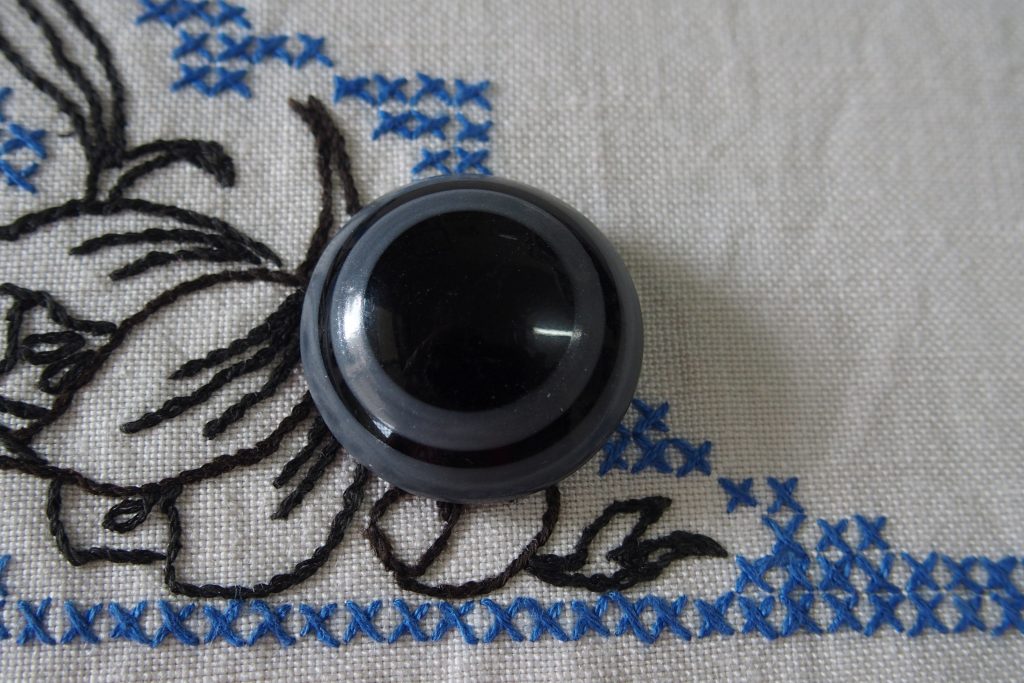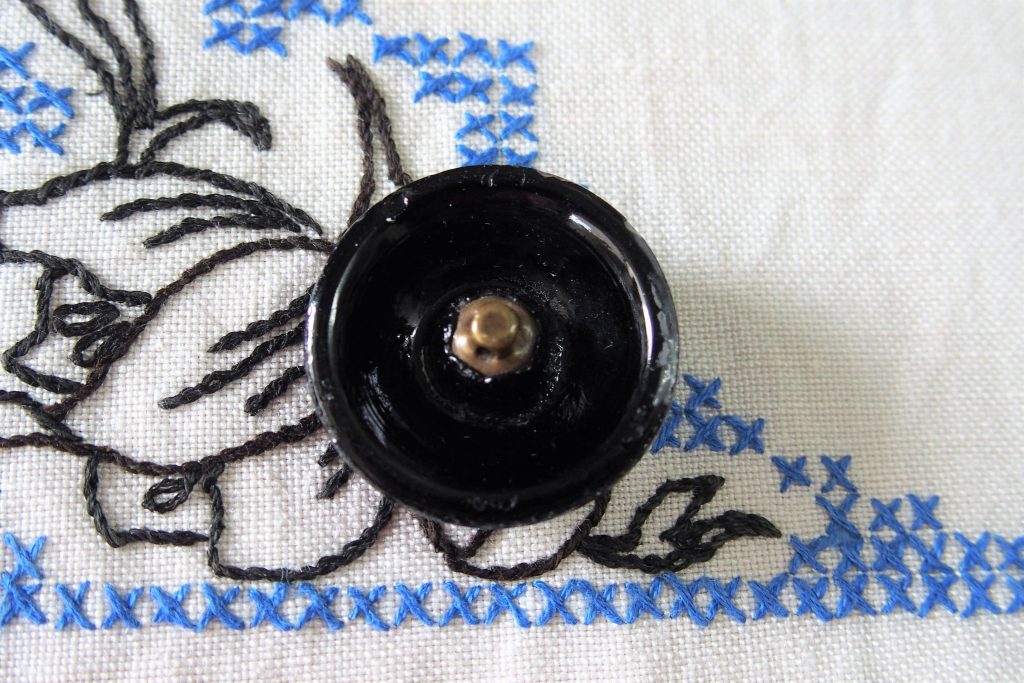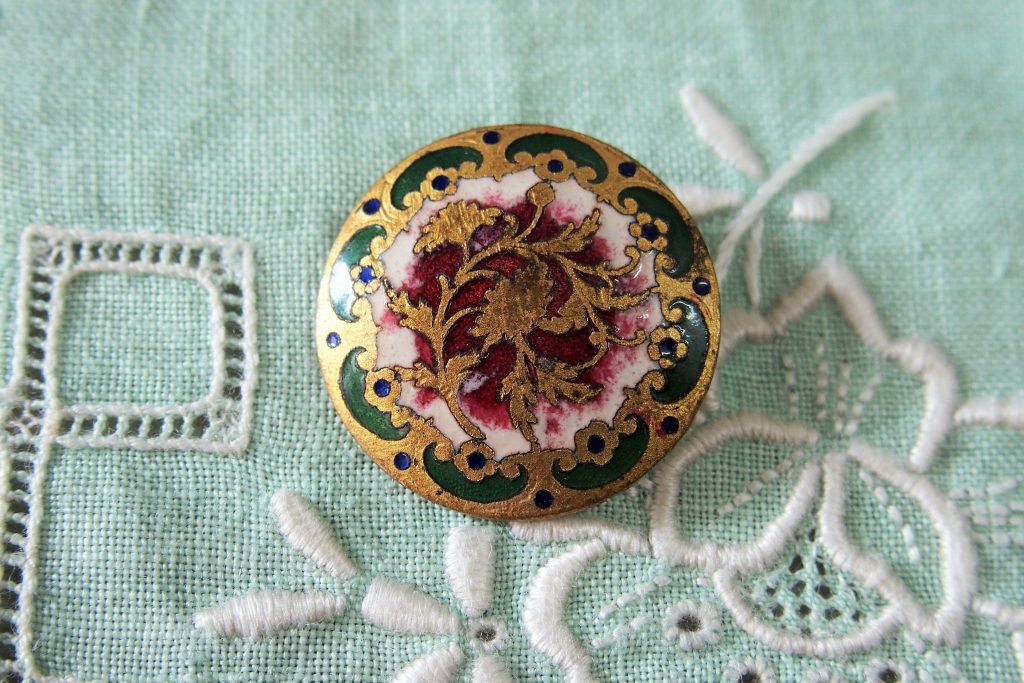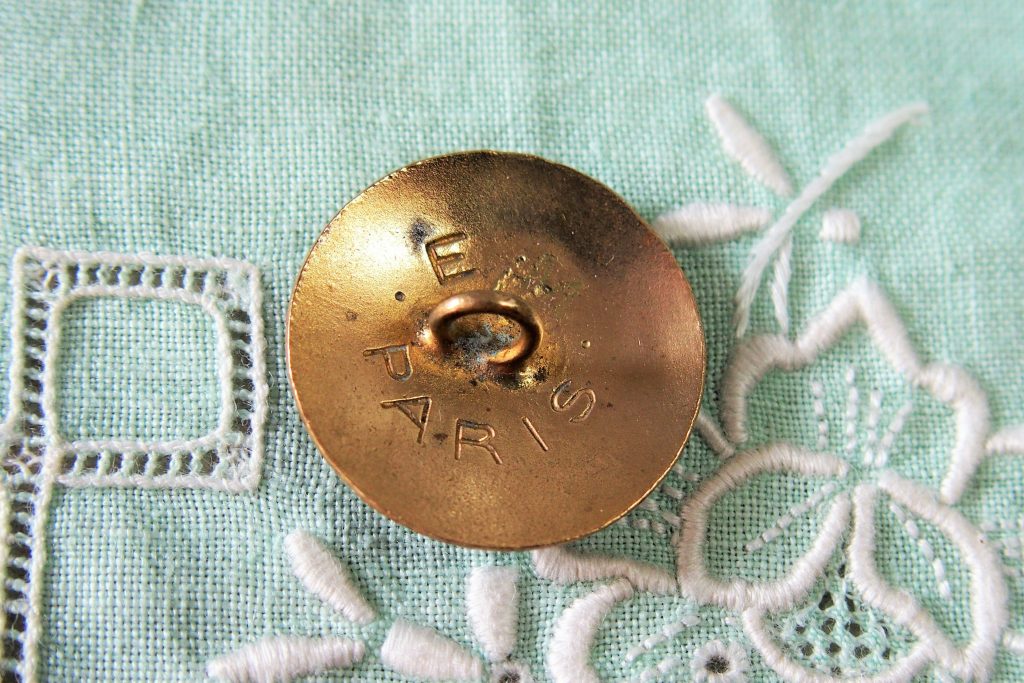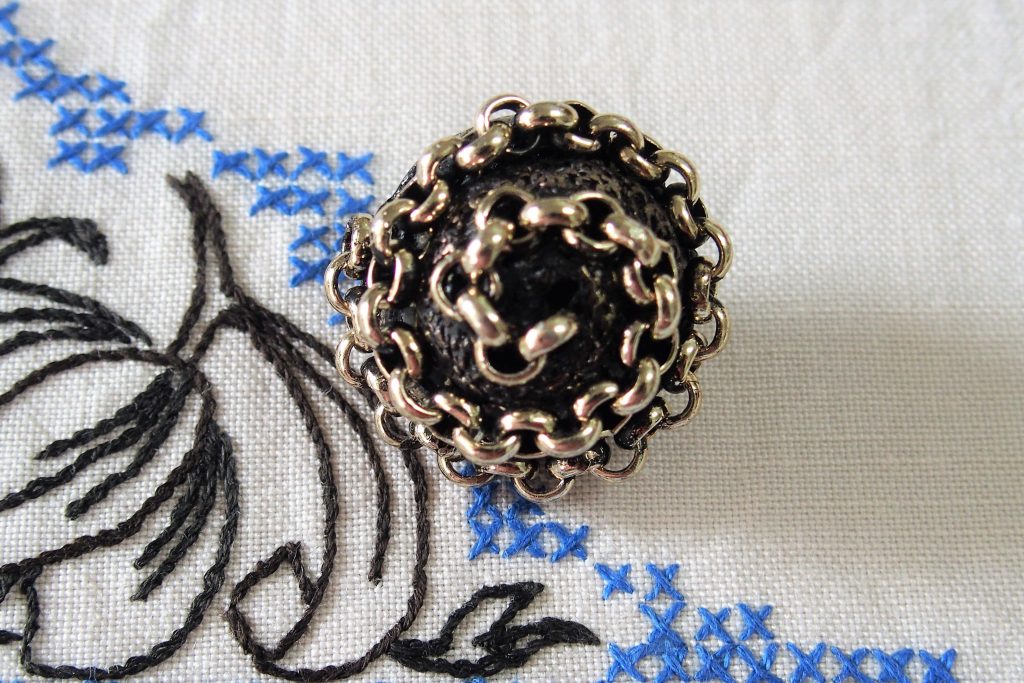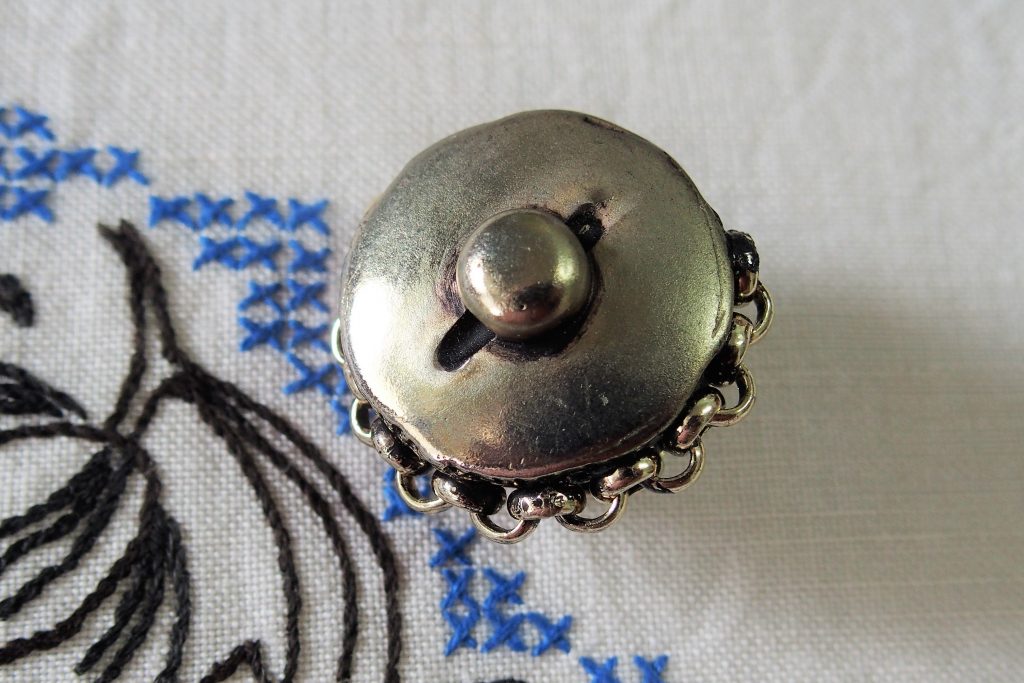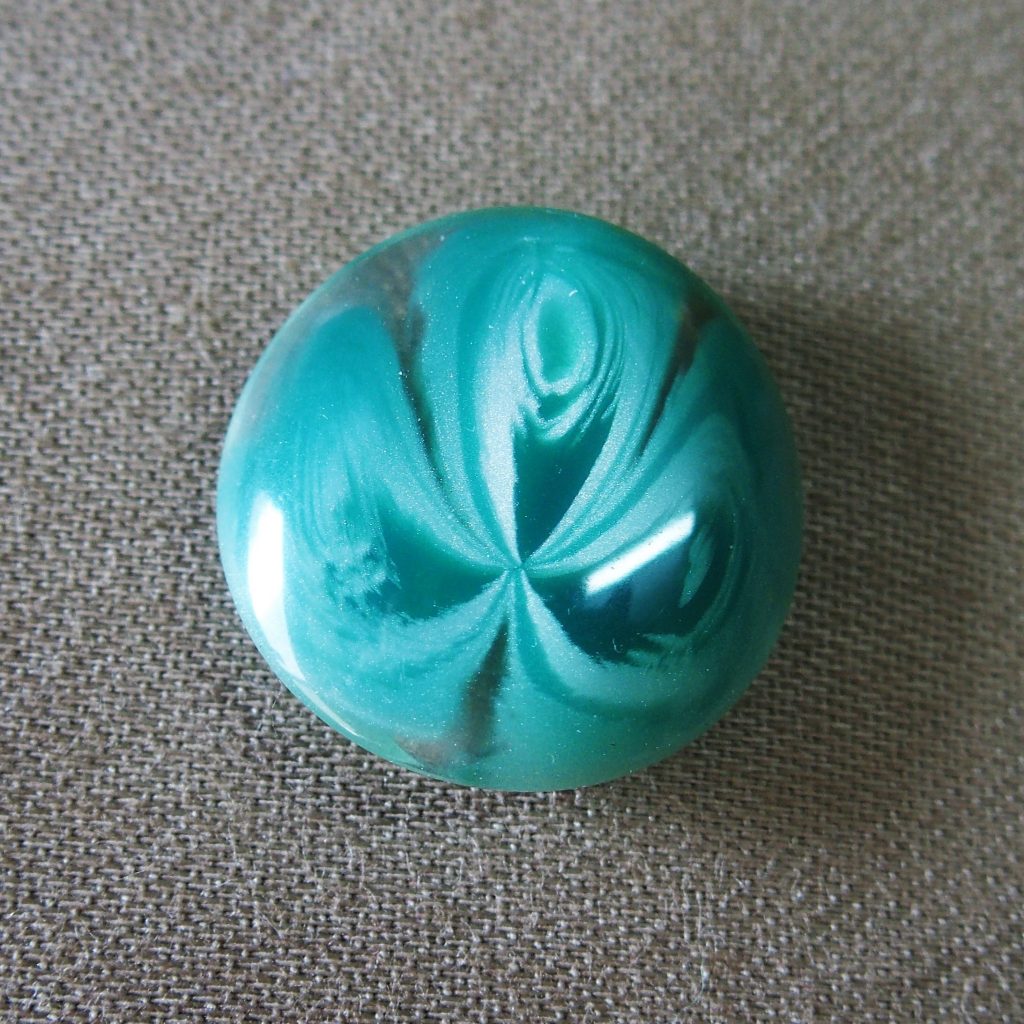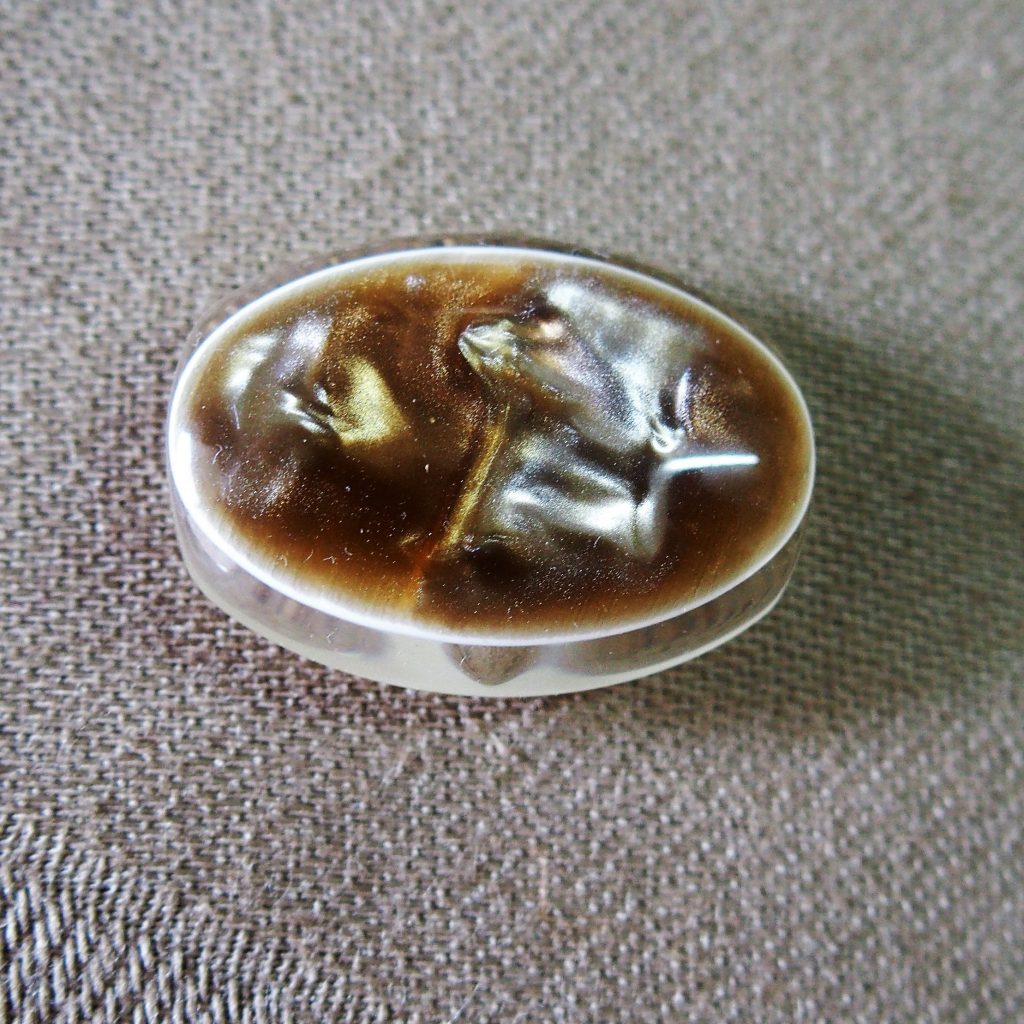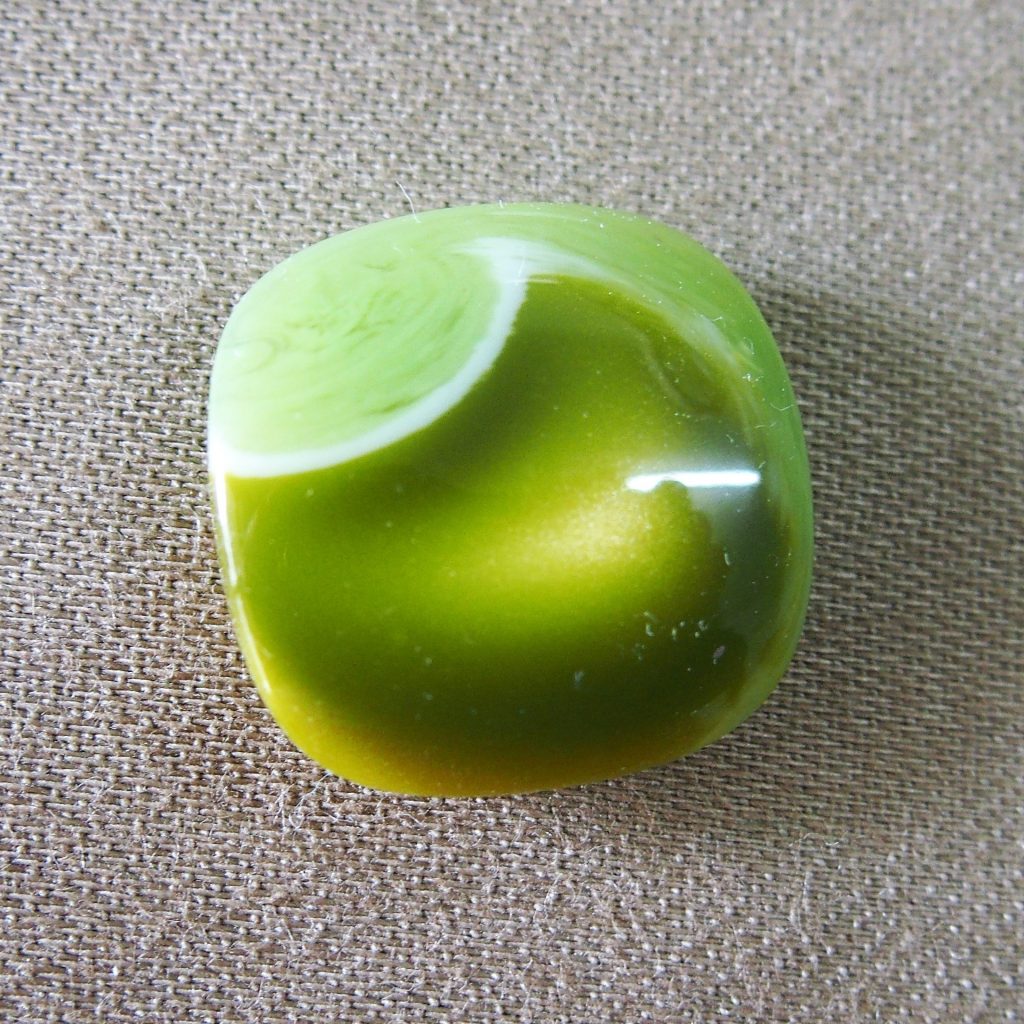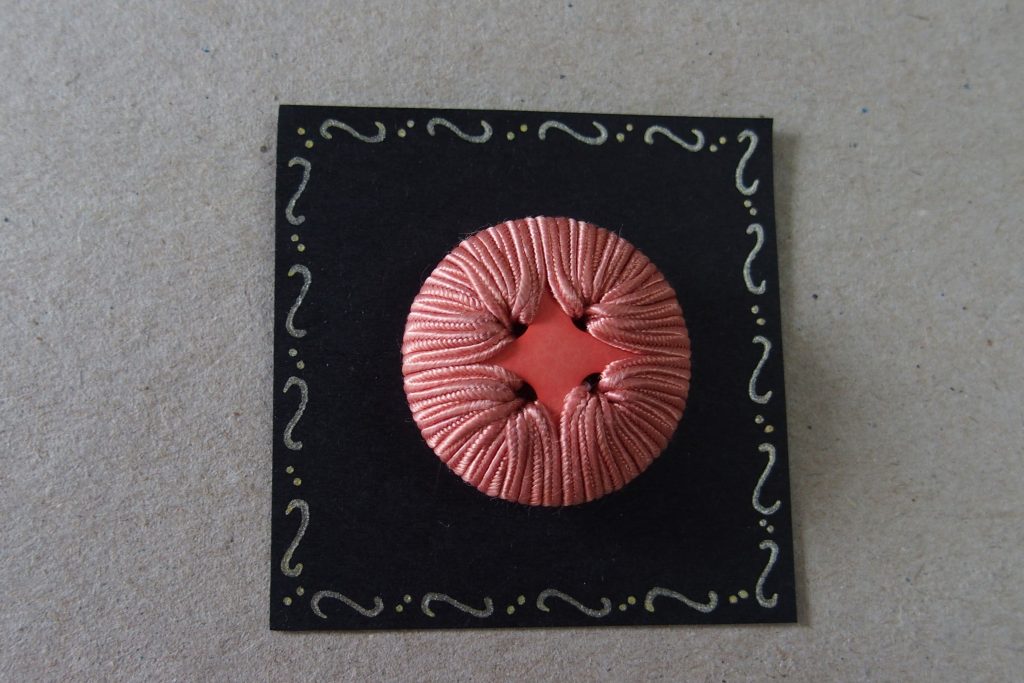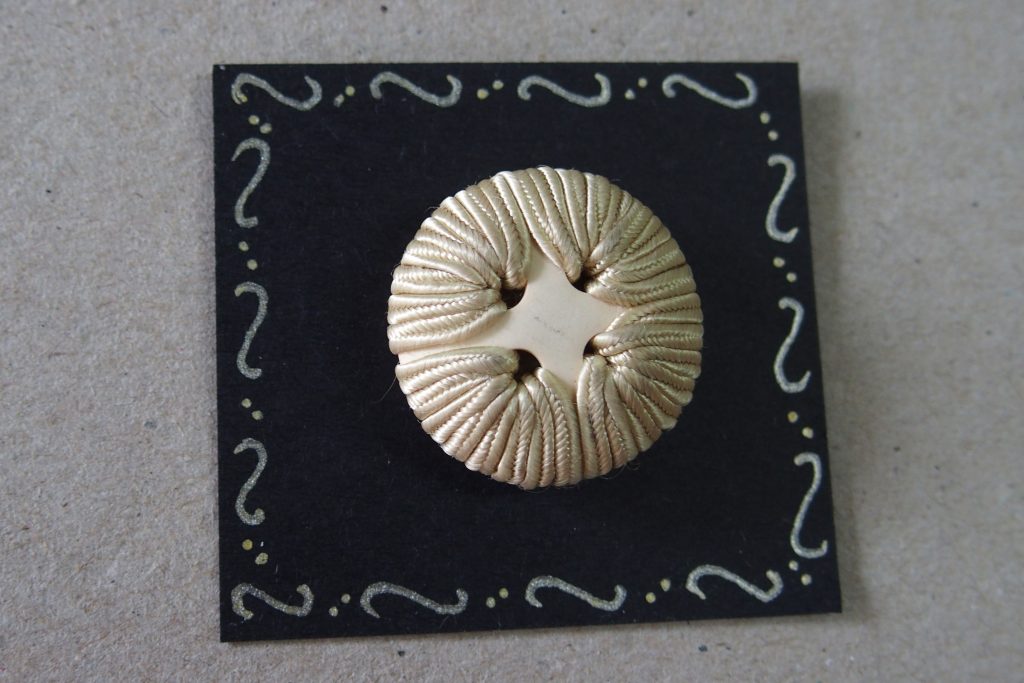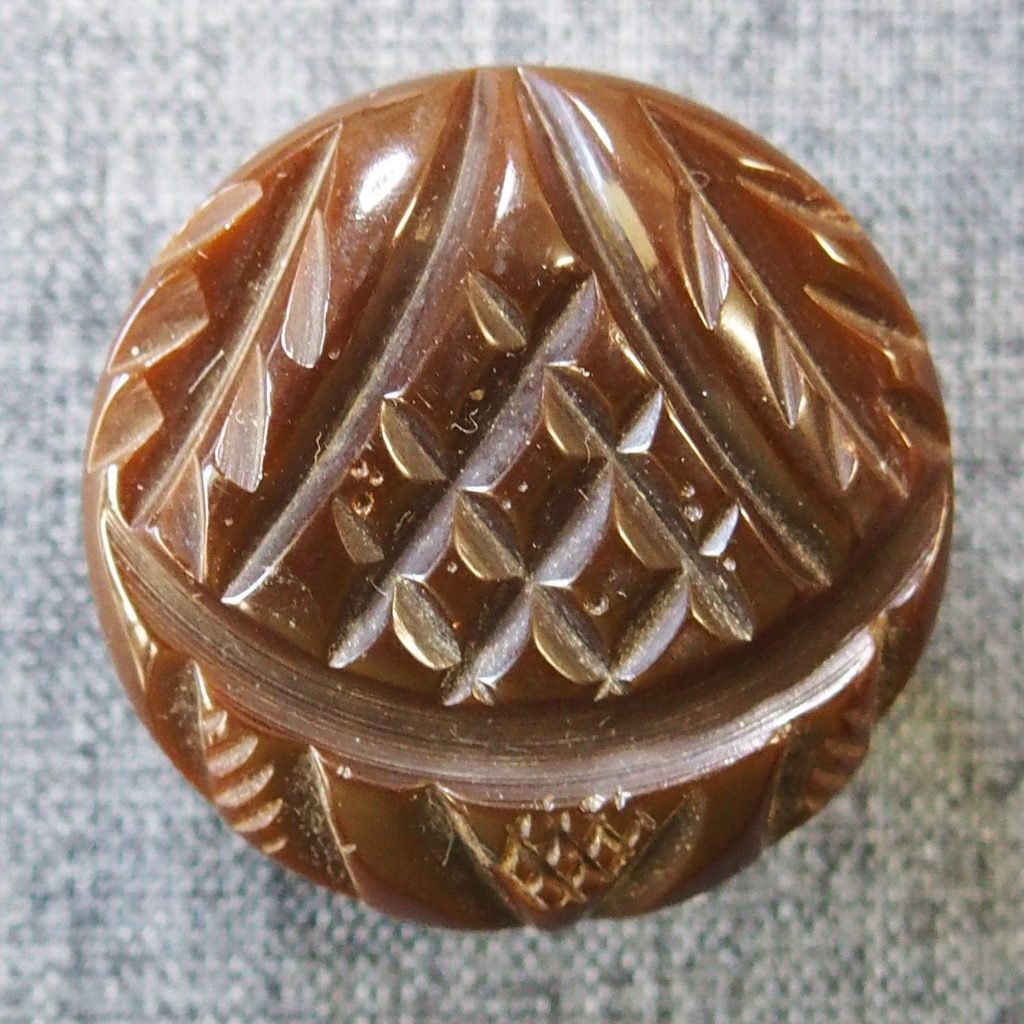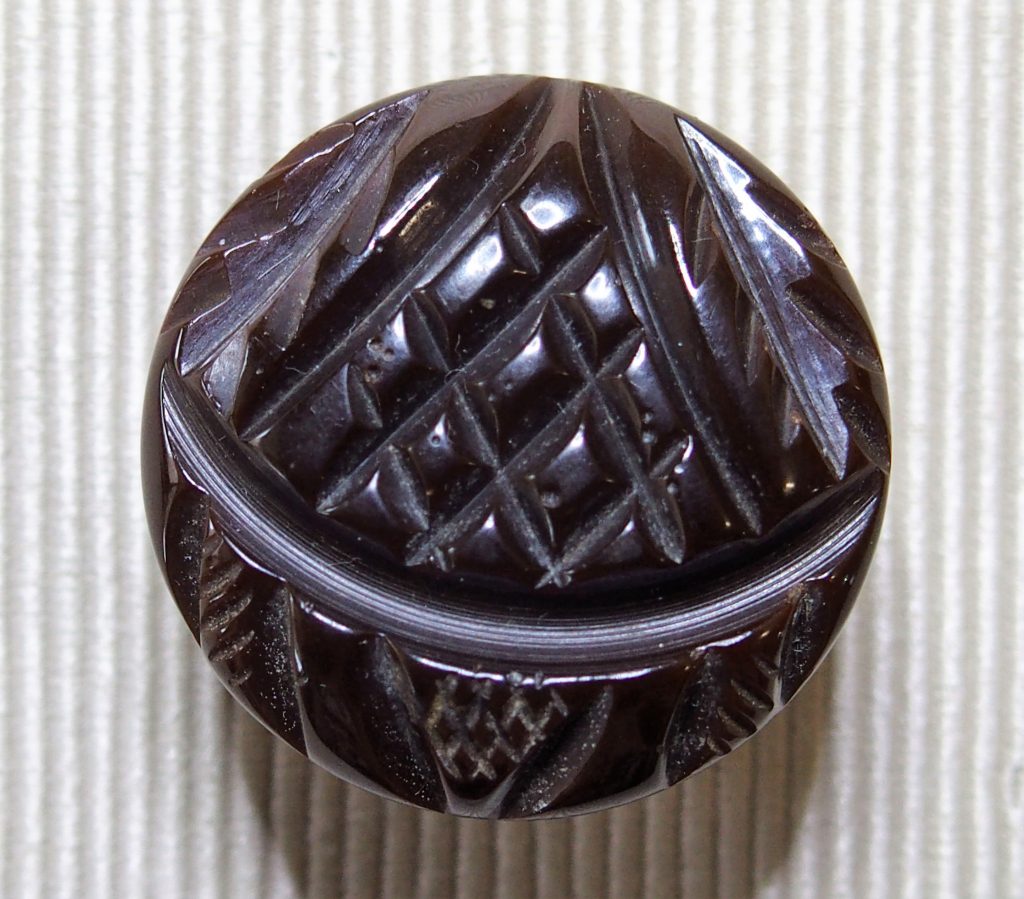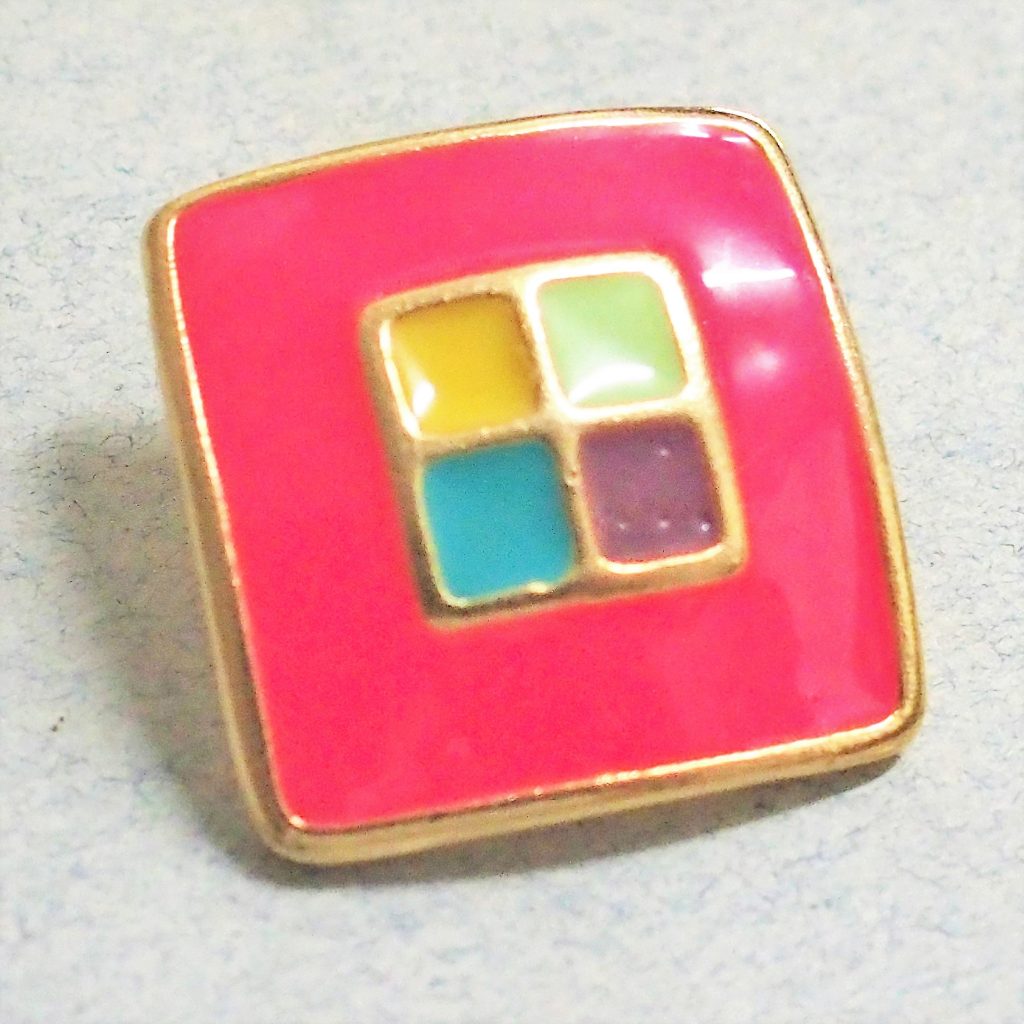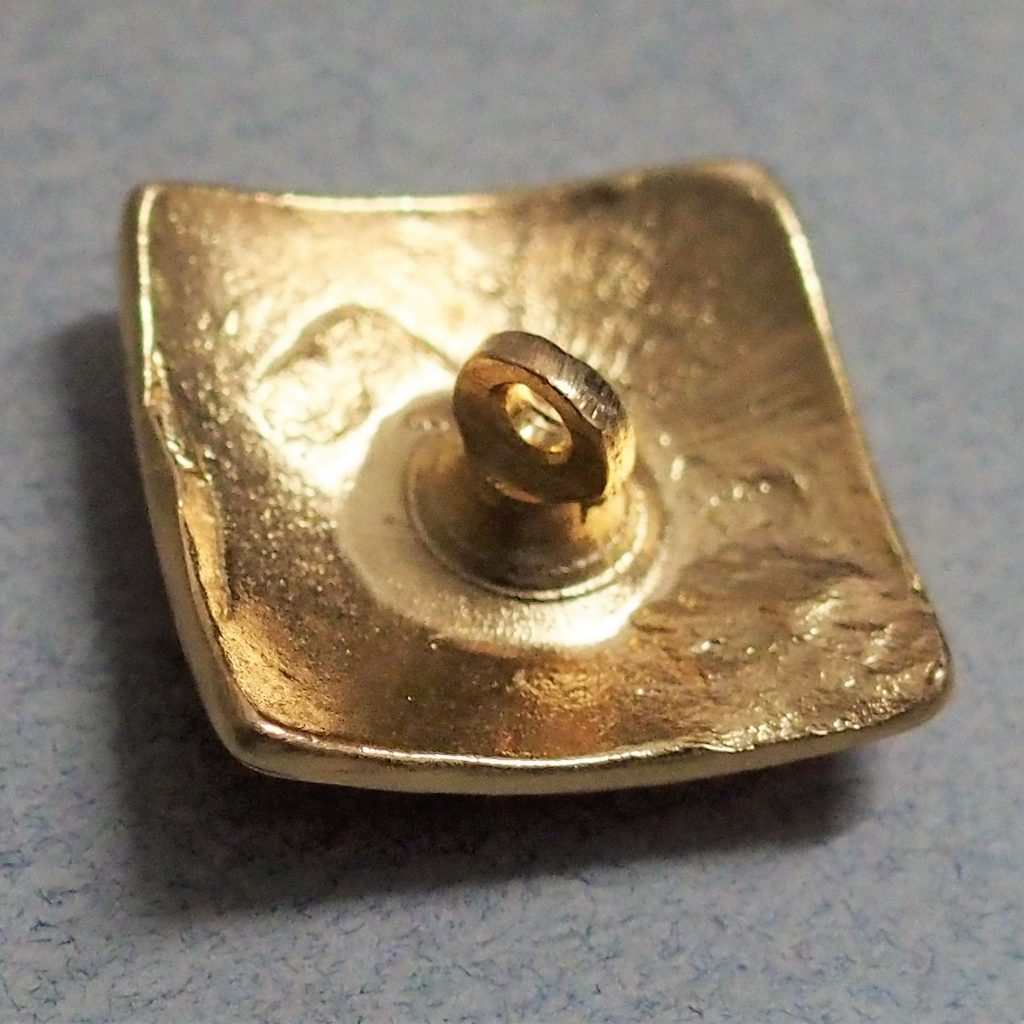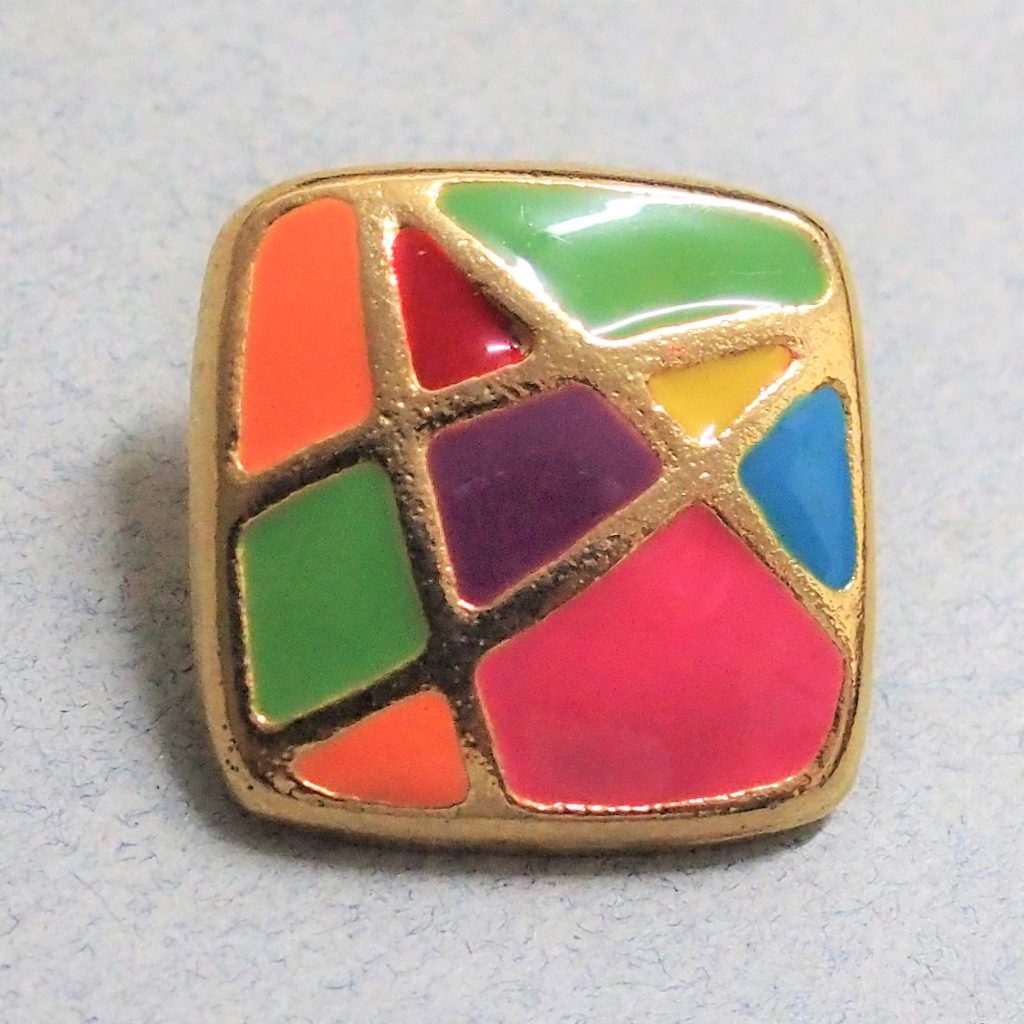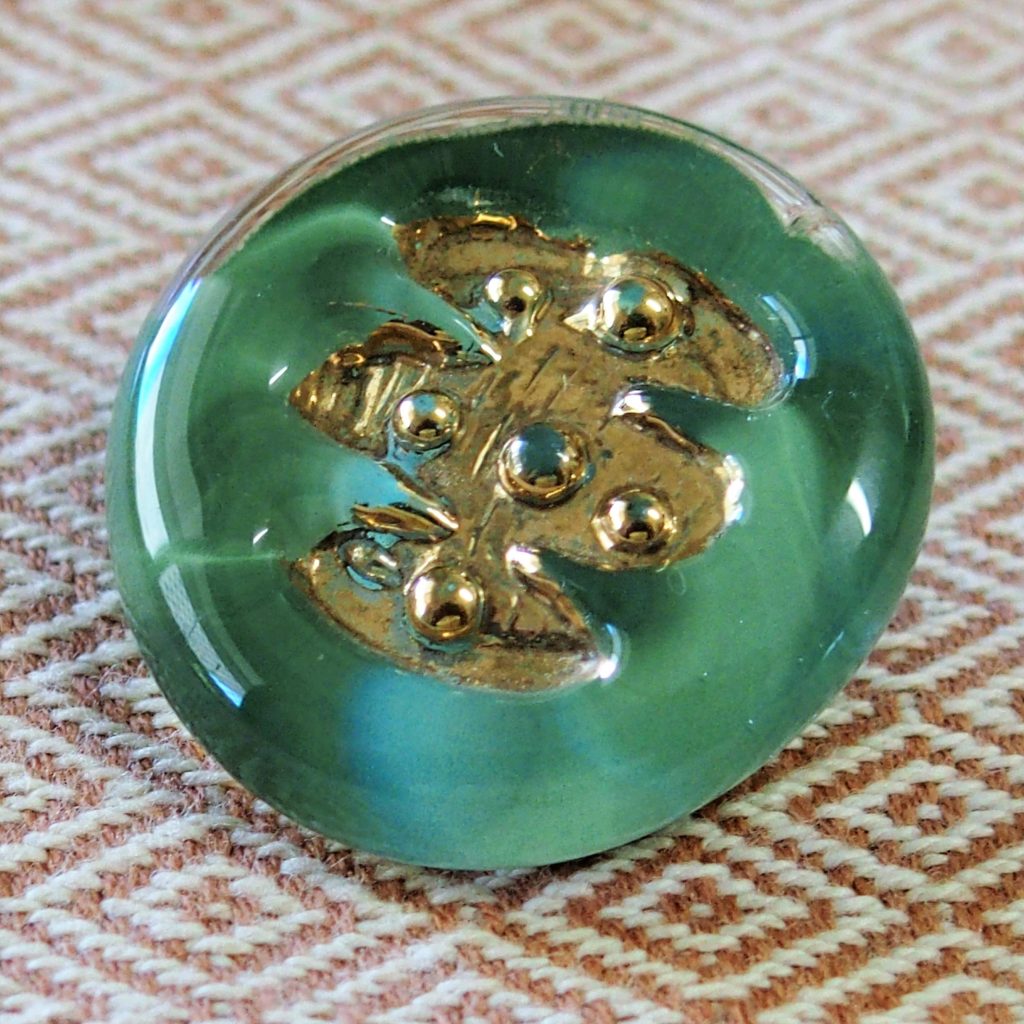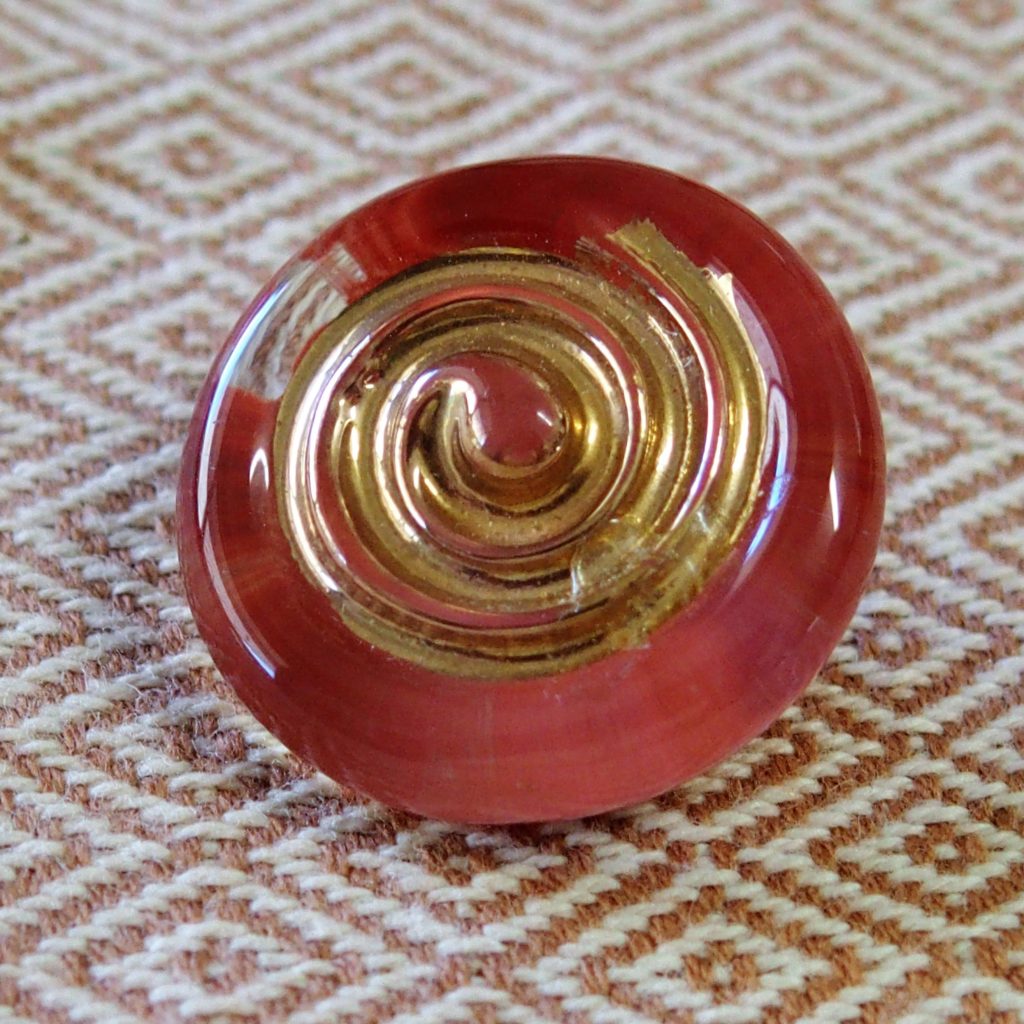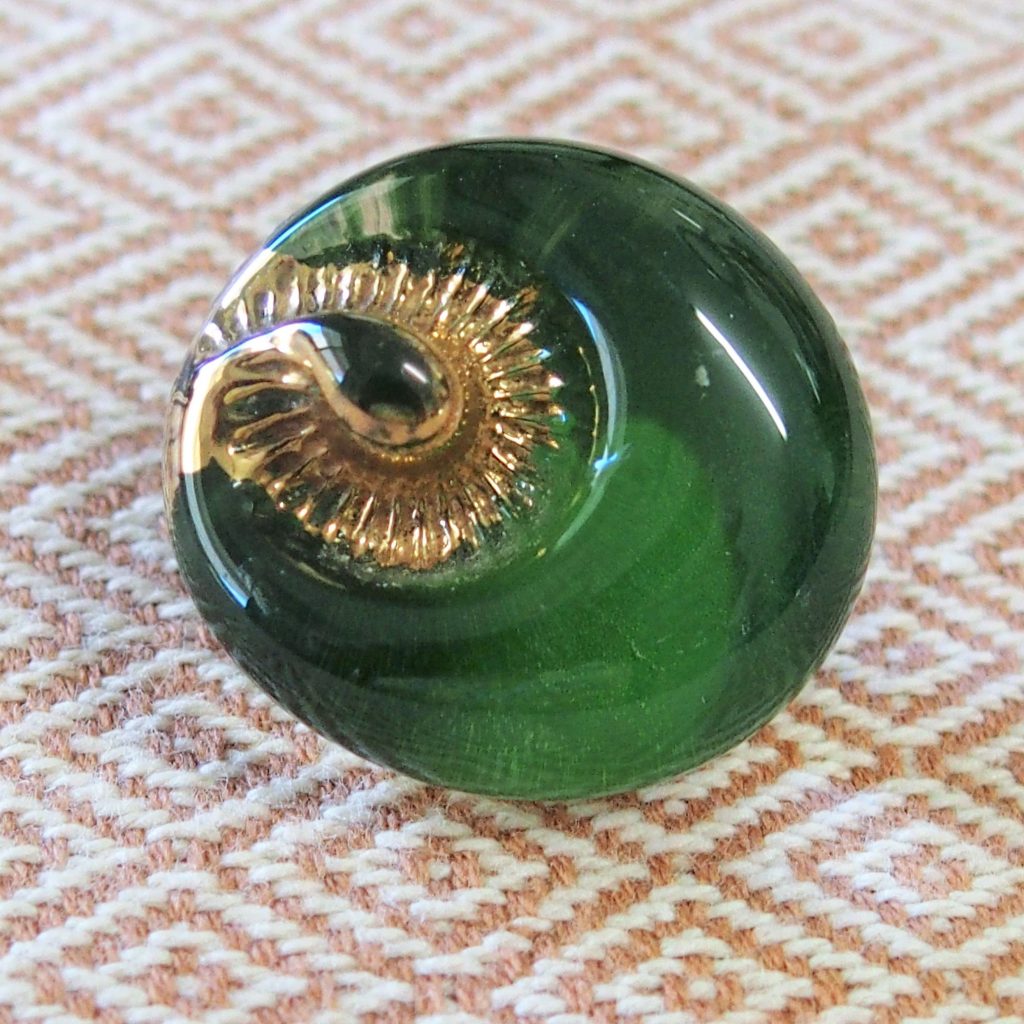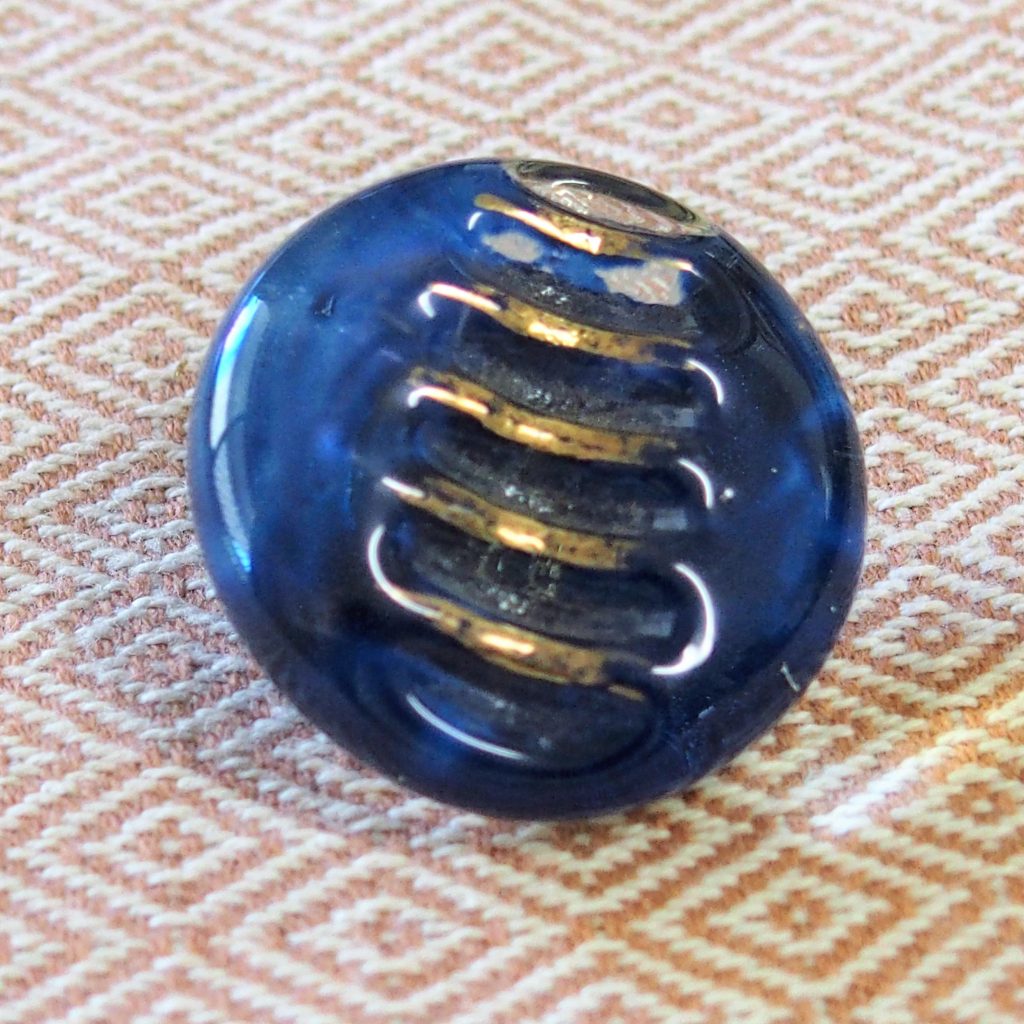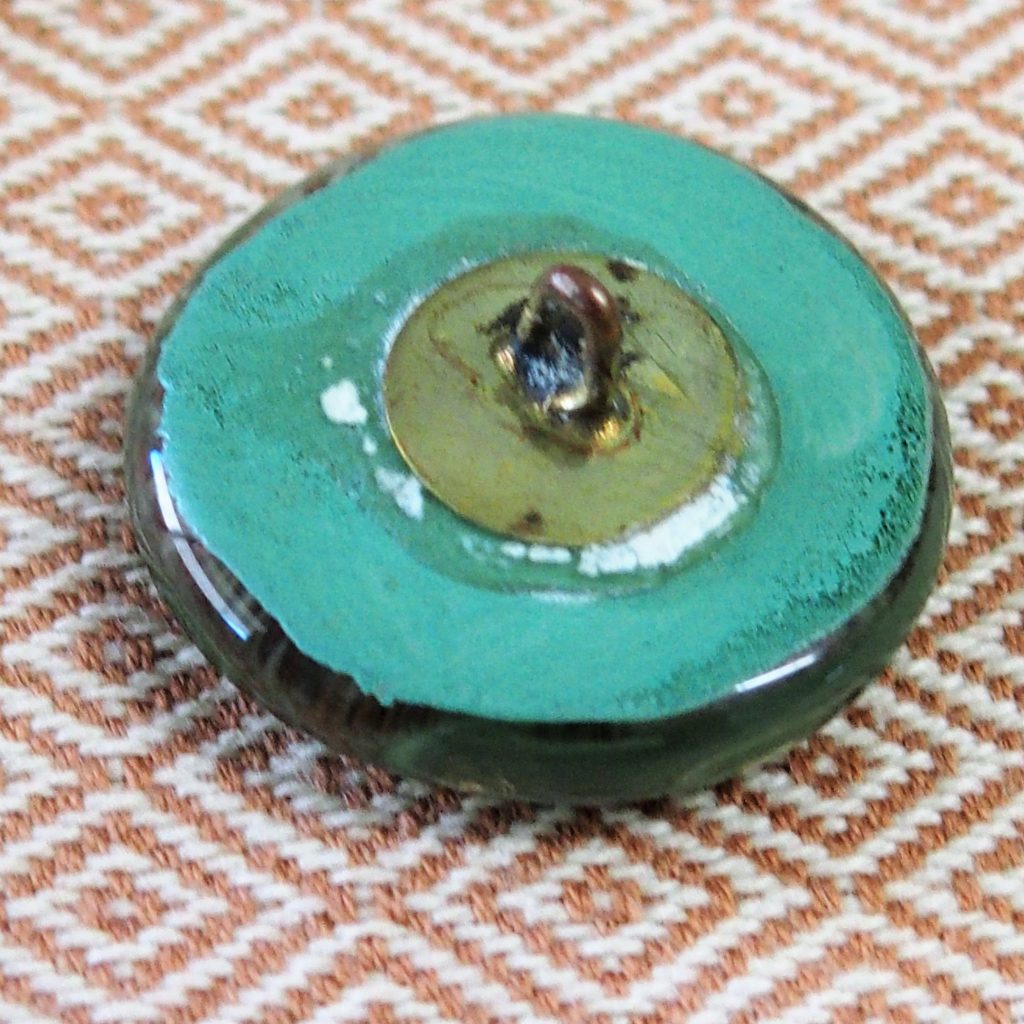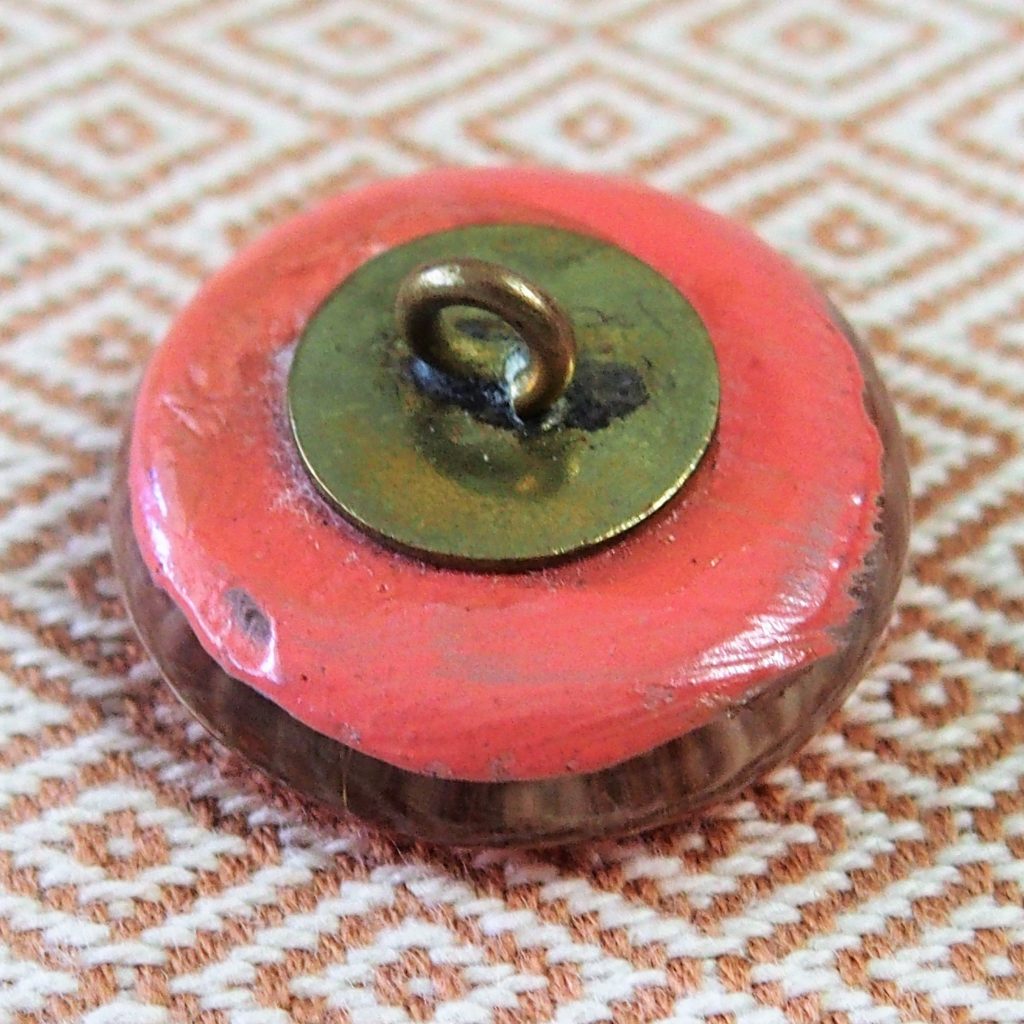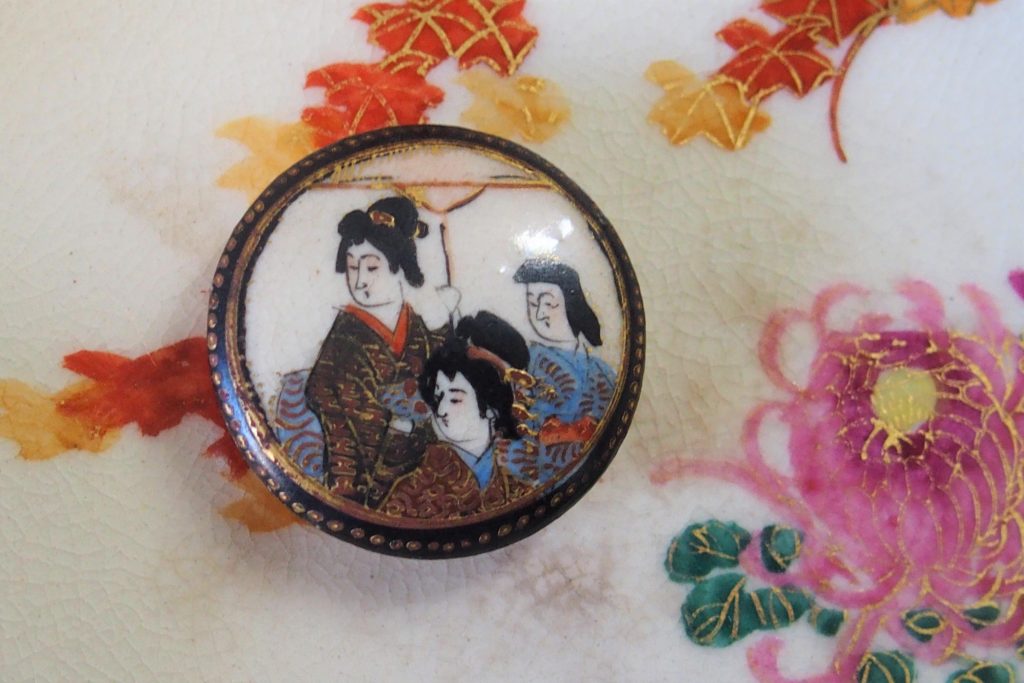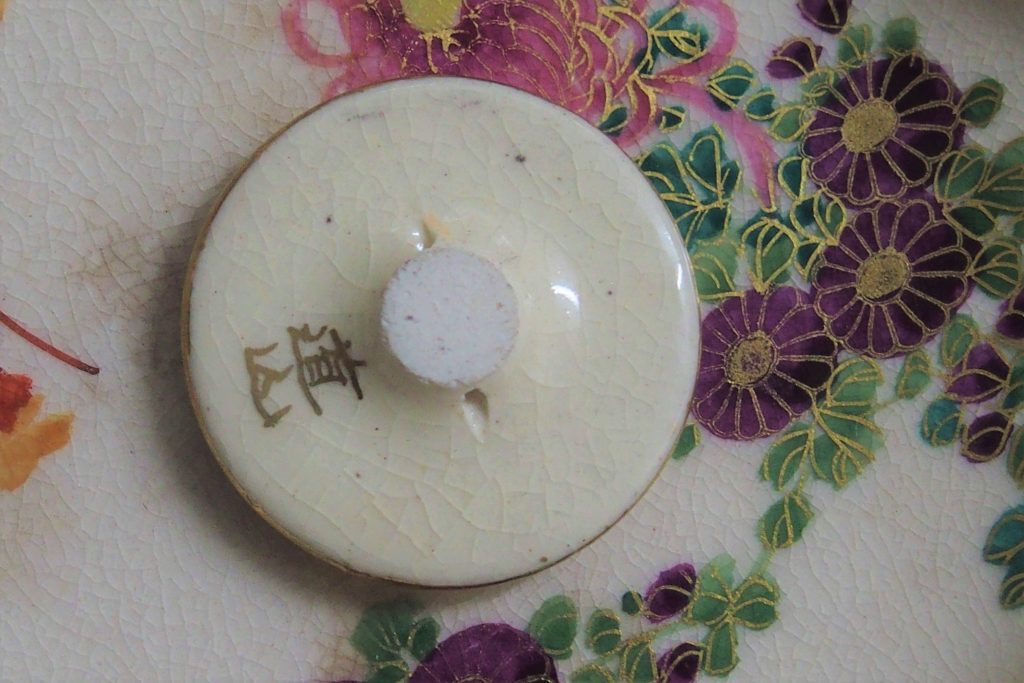This black glass button looks rather like an eye! It has two grey circles around it and is a domed shape. It has a metal four way box shank.
ENAMEL BUTTON
Here is an enamelled brass button with the backmark E.M. PARIS. It is enamelled in green, white and maroon and has a decorative border. It measures just over 2 cm.
MODERN BUTTON
This button is rather unusual with a chain wrapped around it. I do not know what the base of the button is made of. It is quite chunky and effective.
PLASTIC BUTTONS
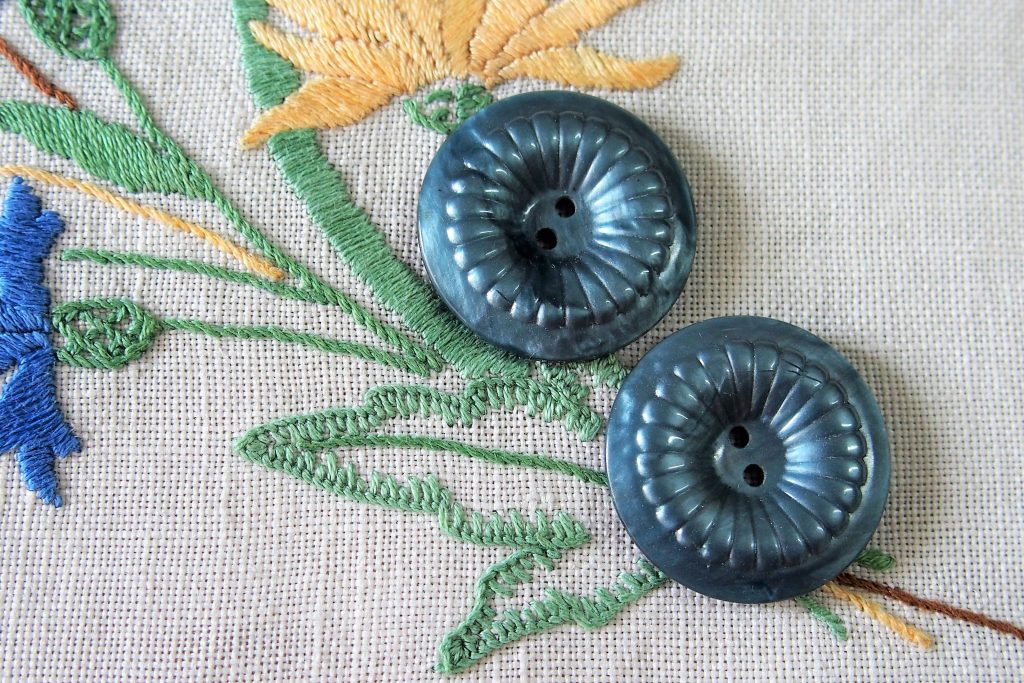
These two pressed plastic buttons are from the 1930’s – 40’s. They would have looked nice on a hand knitted jacket of the same colour.
NEW BUTTONS
I have just bought these three buttons from Lincraft in the last couple of weeks. They are of a type of plastic ( maybe acrylic or polyester ) with a high gloss making them attractive. I occasionally buy new buttons just to add to my collection. I have them all together in a little set of drawers.
FABRIC BUTTONS
Here are two nice buttons with a plastic base. They have four holes in them where the cord has been threaded through and wound around. They are very effective.
BAKELITE BUTTONS
These two chunky carved bakelite buttons are of the same design but different colours. They have a metal loop shank and are quite large ( probably overcoat buttons.) I like this type of button.
ENAMEL BUTTONS
Here are two modern enamelled metal buttons. They have a geometric design and are very colourful. They are so different from the enamelled brass buttons of the early 1900’s but have a certain charm.
GLASS BUTTONS
These four glass buttons were produced by Grant Featherston of Melbourne after the Second World War. They have a brass plate and loop shank on the back which has been painted with the colour to show through to the front. A gold lustre has been applied to the designs on the front also.
SATSUMA BUTTON
This Satsuma hand painted porcelain button shows three ladies in kimonos within a black and gold border. The traditional crackle glaze is visible on the back. The buttons with figures on them are not quite as common as those with flowers, scenes etc.

